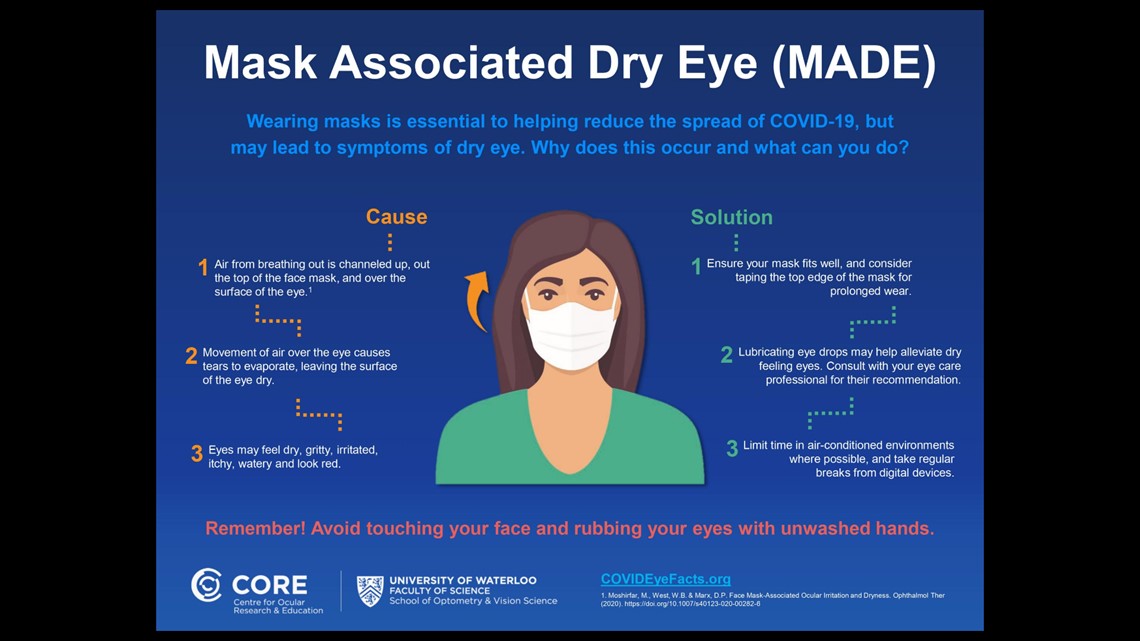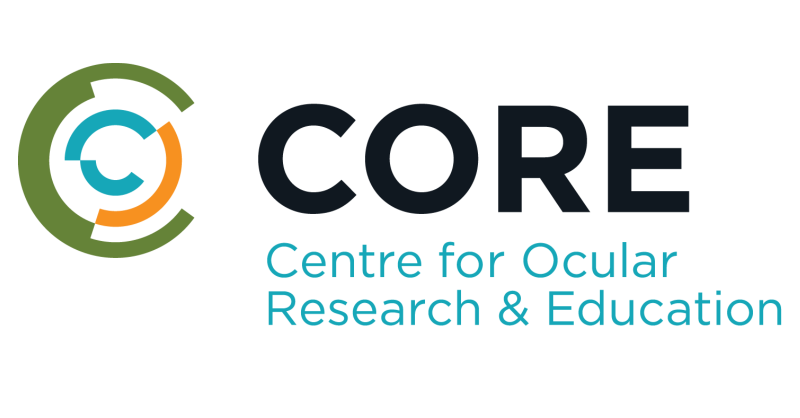YORK, Pa. — The Centers for Disease Control and Prevention says masks help to slow the spread of COVID-19. Unfortunately, they are also really good at something else: causing dry eyes. FOX43's Amy Lutz looked into how this happens, and what you can do to find some relief.
Thirty-six million Americans have dry eye disease, a number that Dr. Leslie O'Dell with Medical Optometry of America in Shrewsbury, York County says has been rising since the pandemic began. "We know it can not only sometimes be visually debilitating but also it is a huge issue for quality of life," she said.
Increased screen time is one major cause of dry eye disease. "When you or your child or parent uses these devices, you blink about 50 percent less, so now doing that for an hour really can dry out the surface of your eye," Dr. O'Dell warned. However, there's another culprit experts are now seeing: MASKS. Dr. O'Dell says they are calling it mask-associated dry eye, and here's how it happens.
The Centre for Ocular Research & Education offers this great graphic below to help you visualize what occurs:


Basically, the air you exhale while wearing a mask needs to go somewhere. So if a mask sits loosely against your face, the air is likely going up and out of the top of the face mask and then over the surface of your eyes. It causes tears to evaporate, leaving the surface of your eyes dry.
Symptoms of dry eye disease:
Red, itchy, painful or burning eyes that may feel gritty, tired and irritated. It typically gets worse when using fans or air conditioning or being in windy weather.
Treatments:
There are treatments out there, including things as simple as taking omega 3 fish oil every day or using prescription drops. "The other things are treatments we can do that help loosen up oils that are inside the eyelids and help to stabilize your tears throughout the day and those treatments are growing and very, very effective," said Dr. O'Dell.
The problem is not many people actually see their doctor. Remember the 36 million people I mentioned who suffer from dry eye disease? Only 17 million of them have been diagnosed and only 1 million have actually received treatment. Dr. O'Dell thinks she believes why part of that could be. "People don't think they can seek a medical eye exam because they don't have a vision plan," she said.
That's where her new practice comes in, Medical Optometry Of America. You won't find any glasses to try on or contacts to order, because it's the first national brand that focuses exclusively on medical eye care needs for the community. And that means you can use your *medical health insurance to be seen, treating the disease early so it doesn't get worse.
"With vision, the more proactive and preventative we can be with your care, the better your vision will be over your lifetime," Dr. O'Dell said.
To find out more about Medical Optometry of America, click here:


